It’s always a worry putting on a new event, never mind charging for it, but the response to the first One Step Beyond conference shows there is real demand for content that tackles the key consumer challenges and opportunities that all drinks companies need to meet.
The one thing the drinks industry can’t be accused of is running events, and bringing people together – particularly the wine sector. But for the overwhelming majority of the time those occasions are strictly for tasting and talking about what it’s in the glass. What it does not do very well is ever talk about how it is then going to market and sell what’s in that glass to the right target consumer.
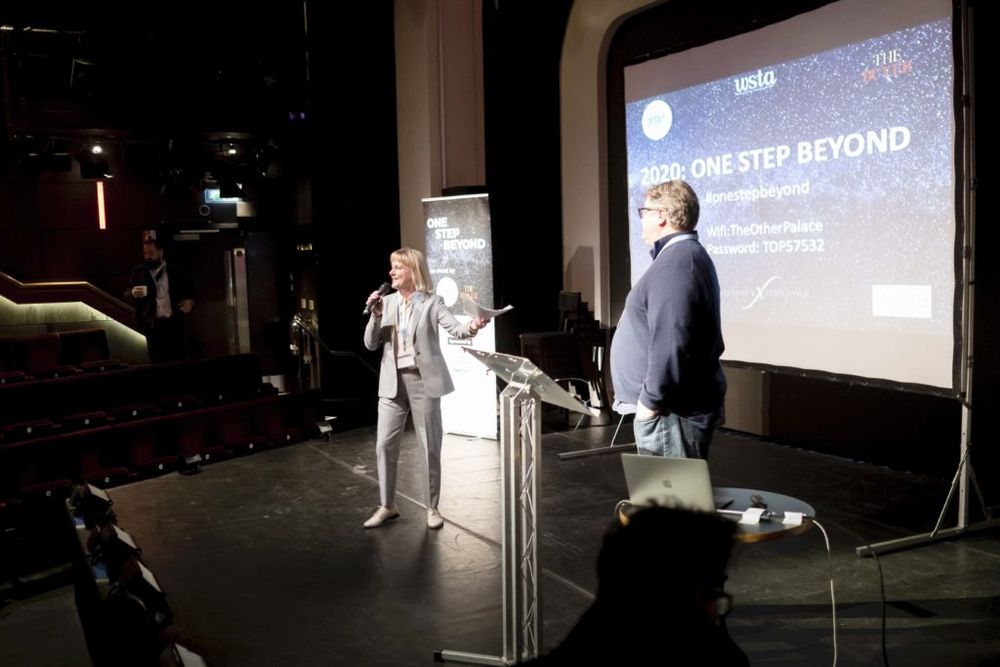
The inaugural One Step Beyond conference was organised by Sophie Jump and The Buyer’s Richard Siddle. Photography: Thomas Skovsendei
The key difference with last week’s One Step Beyond conference was that there were no wine, beer or spirits glasses in sight – at last not until everything was wrapped up for the day and it was time to relax, network and debate the issues brought during the day.
That’s what the One Step Beyond conference, run in partnership with the Wine & Spirit Trade Association, was set up to do. To at least give the drinks industry an opportunity to sit down and listen to some of the key challenges everyone in the sector faces – to some degree or another. To hopefully give businesses and individuals ideas and inspiration that help them look to tackle the biggest changes in technology and the impact they are having on the consumers and customers we are all hoping to serve.
To do so meant calling on the support and insights from experts outside the day-to-day drinks industry. Businesses working in sectors that are at the front line of these changes, and in most cases helping to drive them. From traditional retail to ecommerce, to voice search, digital and data, to design and changes in sustainable packaging.
Sectors whose individual challenges might sit outside the cut and thrust of the drinks and wine industry, but who ultimately rely on them as potential core customers.
Like Emetry and 5 Forests, our main conference partners, that specialise respectively in data analytics and digital marketing for wine and drinks businesses.
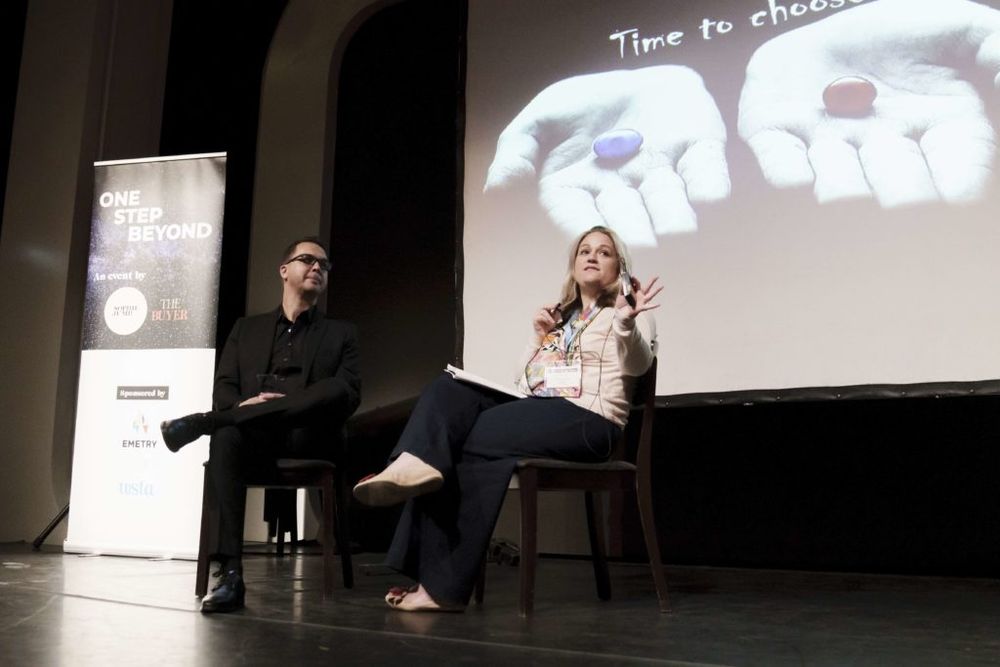
5 Forests’ Polly Hammond and Emetry’s Paul Mabray discussed the future of digital and brand marketing. Photography: Thomas Skovsende
Each of the keynote speakers were briefed to tackle the recurring issues that delegates were asked they would most like to hear addressed at the event. Time and again this came back to how to manage a more effective digital and consumer strategy in their company. Particularly around online retailing, ecommerce, analytics, and the drive to lower, healthier and more sustainable products.
It’s all very well hearing the individual expertise of keynote speakers, but what relevance do their insights really have on the day to day of running a drinks business. That’s where the two panel debates came in, which both featured leading figures within the drinks industry who, in their own individual ways, are finding success using both technology and consumer insights.
The Agenda
The conference agenda included:
- ‘A snapshot of commerce and why you need to start planning for the future now’. Naji El-Arifi, head of innovation, Wunderman Thompson Commerce.
- ‘Voice: The New Interface’ James Poulter, chief executive, Vixen Labs.
- ‘Direct to Consumer, The Subscription Economy and Diving into Digital’ Paul Mabray, chief executive, Emetry.
- Interview between Polly Hammond, managing director 5 Forests, and Paul Mabray.
- Panel debate with James Balcazar, digital and social media marketing manager, Treasury Wine Estates, Illy Jaffar, managing director, Kinetic Creative Communications and Liam Hirt, director, Circumstance Distillery.
- ‘How packaging and design can push the boundaries’ James Harmer, planning director and Nicki Sherlock, business development director, Touch Design
- ‘How we engage and entertain consumers in the future’ Kevin Shaw, chief executive and founder, Stranger and Stranger
‘The future of retailing’ Simon Mayhew, head of online retail insight, The Institute of Grocery Distribution (IGD).
Panel debate: Paul Mabray, Emetry, Robert Joseph, consultant, Lucy Auld, head of marketing, Freixenet Copestick and Rollo Gabb, director, London Restaurant Group and Journey’s End Vineyards.
Report and key highlights
The Buyer will be producing a full downloadable report on the key findings and insights from the conference in the coming weeks, but here are some of the highlights from each session. The panel sessions will be included in the full report.
Naji El-Arifi, head of innovation, Wunderman Thompson Commerce

Naji El-Arifi said it was key for every drinks business to be thinking about a direct to consumer strategy, even if you don’t implement one in practice
If you are involved in selling and marketing wine and don’t have a direct to consumer strategy then you need to have one. Even if that strategy is it’s too soon to have one, stressed Naji El-Arifi.
He explained how social media platforms, noticeably Instagram and Facebook, are going to become important ecommerce channels in their own right. Particularly as younger ‘Alpha’ generation consumers aged 6-16 become adults. Already 57% of that age group have been influenced to buy something through Instagram.
Which is why, he added, 70% of those who see themselves as ‘digital leaders’ have a ‘social commerce’ strategy – which again might be just be a strategy to watch and learn.
El-Arifi said regardless of where you sit in ecommerce, then you have to be watching Amazon and what it is doing. It just does not dominate online sales in so many categories, it’s changing the way consumers think and what they expect from online retailers.
Particularly Amazon Prime customers. That’s a consumer demographic in its own right – with 49% of online consumers being Amazon Prime members in the UK and 68% in the US.

The shadow of Amazon is over every conversation we have said Naji El-Arifi. Photography: Thomas Skovsende
When a Prime customer is asked how highly they rate factors such as service, delivery and price they are usually twice that of a non-Prime user.
The key, he said, is to look for the cracks in what Amazon can do and try and exploit those. Particularly around its ability to stand for something, curating products and creating a community around what it is selling. The average Amazon purchase has become transactional compared to what specialist sites can provide.
Perhaps the biggest takeaway from what was a wide ranging talk was the need to be constantly adapting and moving your digital strategy to keep up with all the changes taking place around you.
What he called the ‘Zero UI’ effect which encapsulates what we expect now from digital to what we anticipate will happen in the future. So whilst only 7% of those who own a voice assistant currently use it to buy anything and largely rely on it for weather and traffic updates, that statistic goes up to 40% in next two years.
If you don’t do anything there will get a time when you simply cannot catch up without changing your company completely or radically changing the staff you have.
Whereas his generation grew up with the Internet, the Alpha generation will have grown up with voice search and voice assistants. Already 51% of 6 to 16 year olds like talking to Alexa, 22% claim to have used it to buy something and 41% expect to do so when they get older.
James Poulter, chief executive, Vixen Labs
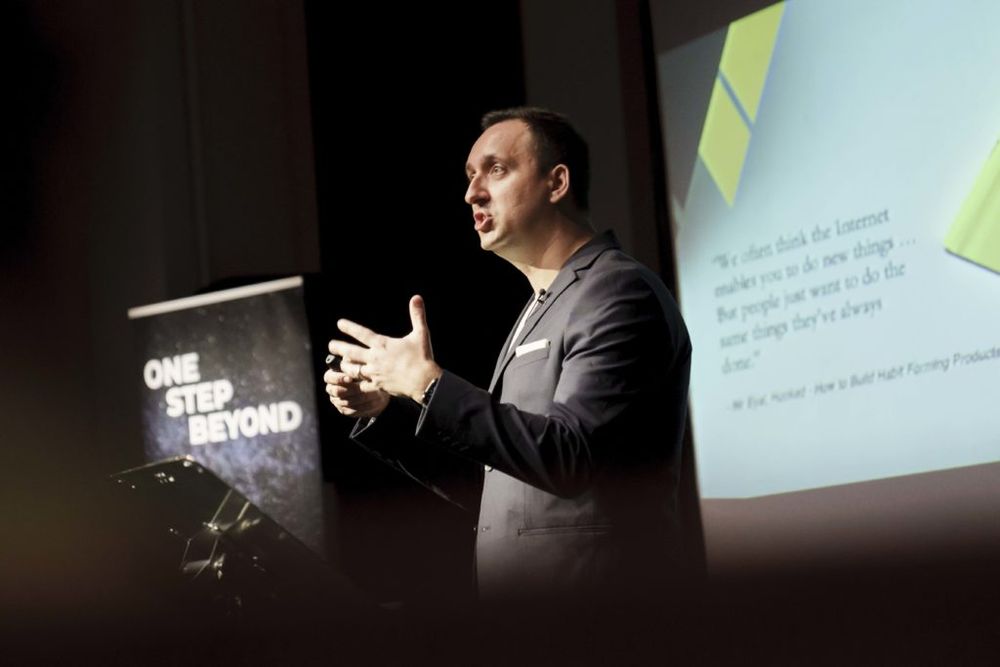
James Poulter said voice is going to be the way we interact with the internet. Photography: Thomas Skovsende
The best way to try and understand the revolution that is coming our way in terms of voice search and how it will completely transform the way we live our lives, explained James Poulter, is to think of life before the smartphone. Which only means going back 12 years.
When they were first introduced they were seen as a novelty. Now we have to get them surgically removed from our hands.
Voice will effectively become the way we connect with and engage with the internet, claimed Poulter.
Yes, we might currently just use voice assistants for day to day information like the news headlines, traffic updates and to play our favourite music. Soon we will be relying on them to effectively run what will become smart technology homes. With voice in each room allowing you to turn on lights, change the heating, order more loo roll, talk you through how to make a spaghetti carbonara or make an Old Fashioned cocktail.
They will become part of our daily routine, and that’s the key to why we all need to take them super seriously. If you can’t be found through voice search then effectively you won’t exist.
He sees a time when we will be using voice for around nine to 12 regular tasks a day and brands and retailers will be continually prompting us to use voice search to find what they are offering. Driving up the motorway and we currently see a sign for McDonalds at the next service station. With our increasingly voice activated cars it will more likely say “Use Alexa to order your McDonalds to pick up at the next service station”.

Poulter: using voice will be how we run our lives, homes and daily routines
Voice is going to benefit and be more natural for some areas of life over another. Hearing someone talk us through filling in a mortgage application, or how to fill in a tax form will work well
through voice.
If it all seems a bit daunting then get into audio first, said Poulter. The rise in demand for podcasts which could be short, long or in between is a great way for brands and businesses to take the first steps into the future of voice.
Paul Mabray, chief executive, Emetry

The key to digital is to take small steps, all the time, said Paul Mabray of Emetry. Photography: Thomas Skovsende
Paul Mabray was able to lay out the hard facts in terms of where wine sits in the scheme of things in terms of declining sales, and fewer new and younger customers coming into the category.
If we are going to stand a chance of fighting back, or at least making the case for fighting back, then we need to be online, we need to be on top of digital. Not just though ecommerce but in all aspects of what digital can do for any business. “We are in an internet society, it fuels everything we do,” he said.
It’s why he agreed with Wunderman’s El-Arifi that we all need to think and worry about the big, bad “demon” that is Amazon. “Amazon is going to be a wine category changer that we have never seen before,” he claimed. Now that it is driving its own bricks and clicks strategy with Wholefoods and its own stores the ante has been raised even further. “No other sector has seen a competitor that Amazon is to wine.”
But there is hope. Providing you have the tools, the foresight and the commitment to take control of your own digital strategy. Which for Mabray has to involve a direct to consumer strategy. Whether you are Treasury Wine Estates or a fine wine producer or an importer inbetween.
Using all the new routes to market that are going to open up all around us – like social media – means there are going to be many ways for the industry to fight back against Amazon.
The issue is how much does the average consumer really care about wine to bother where it is getting from. In the US it is hard to find much wine chatter on social media for wines below £20 a bottle.
Whilst there are online shoe sites with billions of dollars in sales, there are only four US wine sites with sales above $100m.
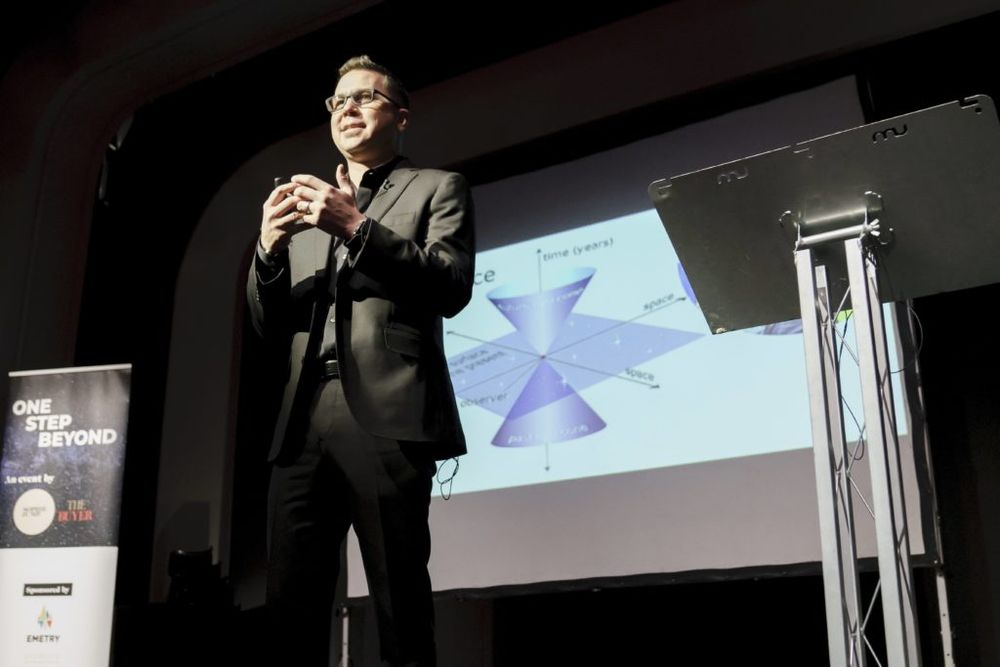
Mabray: you need to get support from chief executive level down if you are going to succeed in digital. Photography: Thomas Skovsende
The big issue for any business looking to move its strategy to digital is getting buy in at chief executive and board and budget level. Otherwise it isn’t going to work. “Otherwise it’s just a service,” he said.
The key, he added, was to “start small, aim big”. Or as he asked: “How do you eat an elephant? With small bites.”
To have a good digital strategy means taking “small steps”.Make sure everyone in the company is on board and “using it” and it “becomes part of your culture”.
Which when it comes to selling wine also needs a step by step process.”Take the time to
really “understand why people are buying” your wine. “What is the job to be done to connect with that consumer? What tools can you use?”
That’s where you need to be concentrating your resources and your time.
The best in the business use digital tools to make what they are offering “more human”.
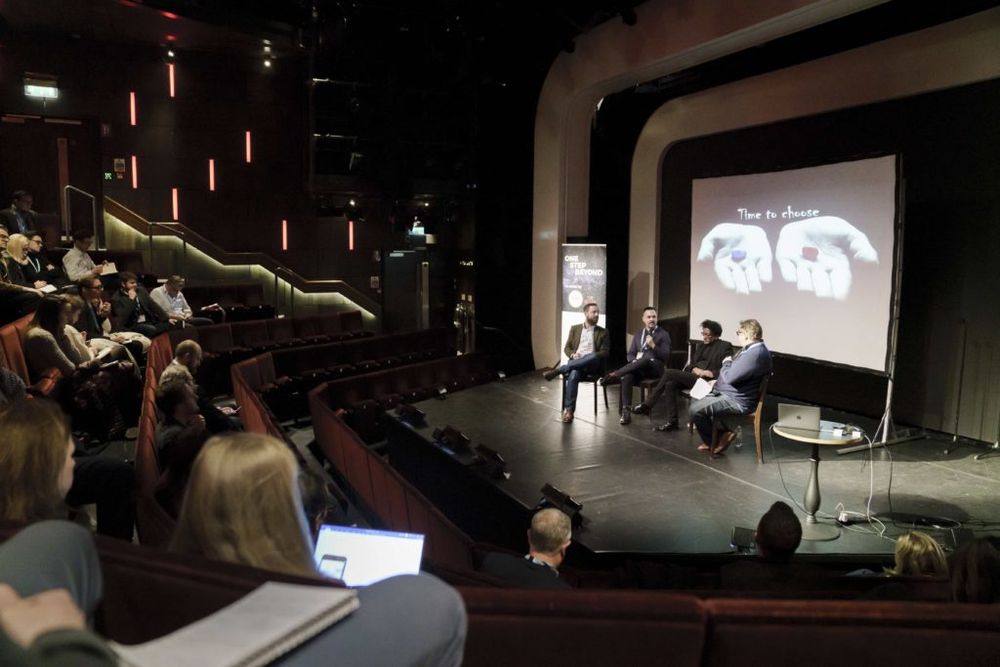
The first drinks leaders panel with Liam Hirt from Circumstance Distillery, James Balcazar from Treasury Wine Estates and Illy Jaffar of Kinetic Creative Communciations. Photography: Thomas Skovsende
James Harmer, planning director, Touch Design
Has there ever been a more relevant and important time to be talking about packaging? asked James Harmer of Touch Design
Our collective acceptance that we all need to be doing something to help address climate change and be more sustainable in our lives has put packaging firmly on the social, political and consumer agenda.
“Packaging is dominating the discussion,” he said. “It’s where consumers want to change their habits. Plastic is now the demon. We don’t like the fact there is so much waste product we are left with…Connected consumers are more savvy know we are part of the problem.”

Packaging is now top of the agenda for consumers, brands and retailers alike, said James Harmer of Touch Design. Photography: Thomas Skovsende
The key for those involved in making and using packaging is to look at what alternatives offer consumers a “guilt free solution”. We want to feel like we are doing something to help not make matters worse.
Harmer says the next 10 years will be critical for how we all tackle this issue and find the right solutions.
Just the changes in packaging reforms and recycling costs will force any business to rethink what they are doing around packaging.
It’s where our major supermarkets have the chance to once again drive the agenda and change all our behaviour as consumers, but also as brands and suppliers.
“Packaging is going to change beyond recognition as we are going to have consider the entire product lifecycle in the future.”
Any new packaging design, for example, will also have to look at the carbon and emissions impact down the supply chain.
All sectors are faced with the same challenge. Reusable packaging is slowly being introduced and rolled out at the likes of Waitrose and Marks & Spencer. The new Loop concept of packaging whereby you pay for a container or a package for say Haagen Dazs and then use it to refill that item time and again will become far more common place.
What Harmer calls ‘return economics’ will become a bigger part of the retailer, supplier relationship.
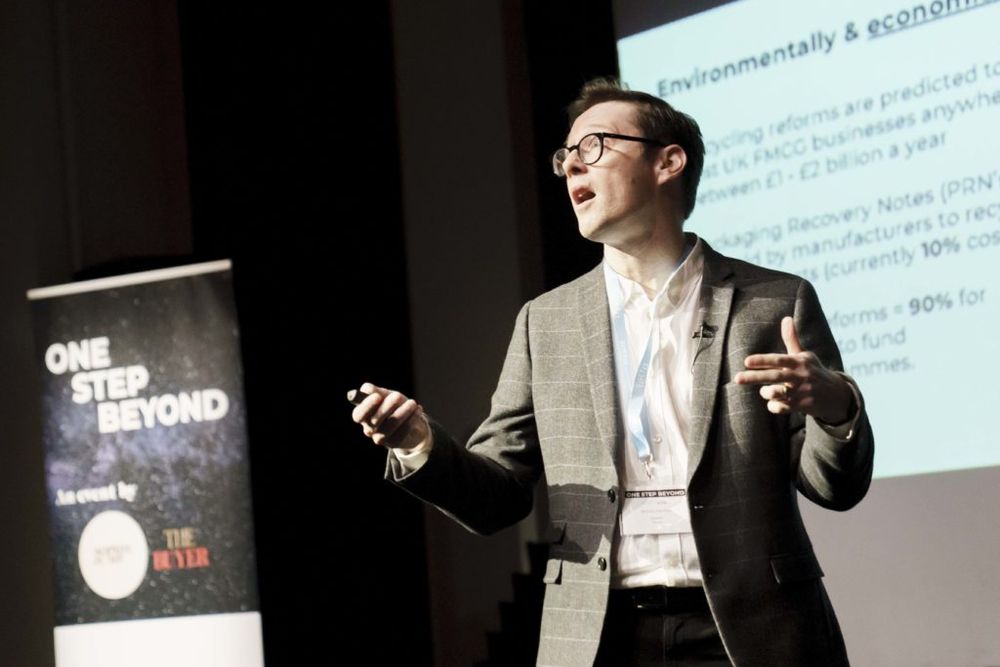
There is a real need to look at packaging alternatives that also look at re-use like the new Loop initiative, said Harmer
The options for new packaging could actually see new forms of plastic come into fashion that are actually better for recycling.
The spotlight is also going to shine brighter and brighter on glass and the carbon factor that is currently coming from the use of glass. “We need to look at new solutions which means we are not locked into glass.”
Can we as an industry help more and find more innovative solutions. Can wine be a leader in this, or a follower? Either way change is coming.”
Kevin Shaw, Stranger & Stranger
Kevin Shaw, founder of the highly influential drinks design agency, Stranger & Stranger, said he was excited about what he now saw as an “anything goes” culture when it comes to design and packaging. Be it banana-flavoured whisky or designing a luxury bottle of tequila that can retail for over £1,000 a bottle, it’s an exciting time to be a designer. At least in the United States.
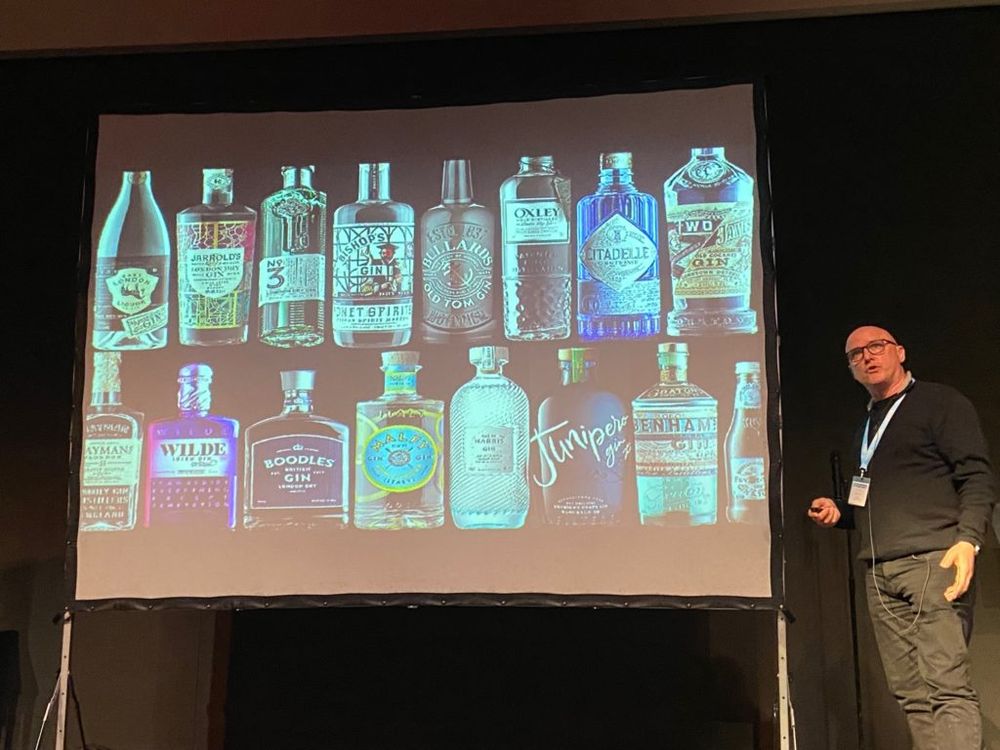
Stranger & Stranger’s Kevin Shaw on the diversity there now is in packaging and design – driven by the US
He said he “escaped to the US” a number of years ago as too much energy and effort in the UK is spent trying to create wines and designs that only retail for £4.99. Whereas in the US it is a completely different attitude: “In the US people say that looks really good, how can we sell it for even more?”
Now he is often being asked to do designs for wines that are going to go on shelf in a liquor store or supermarket at over $100 a bottle.
“We take private label and give them something to be proud of. Use two syllables. Be memorable,” was his message.
The trick for private label in the US is to use exciting and daring designs and cool looking bottles and fonts to attract customers to a certain name or own label brand and then introduce lots of other formats and designs that they can upgrade to.
“It’s about getting an emotional response,” said Shaw.
19 Crimes has not been the phenomenon it has been because of the wine in the bottle, but because it connected with consumers on an emotional level. You wanted to hear the prisoners’ story. Go into their lives.
The drinks category is blurring thanks to the brave decisions being taken on design and the fact a spirits bottle now look more like a perfume or medicine jar. Again anything goes.
It’s why he takes his influences for what is going to work from every culture and art form he can. Be it historical statues, maps, art, opera, film, music, pop culture. It’s all up for grabs and can work so well if used with genuine creativity.
Simon Mayhew, IGD
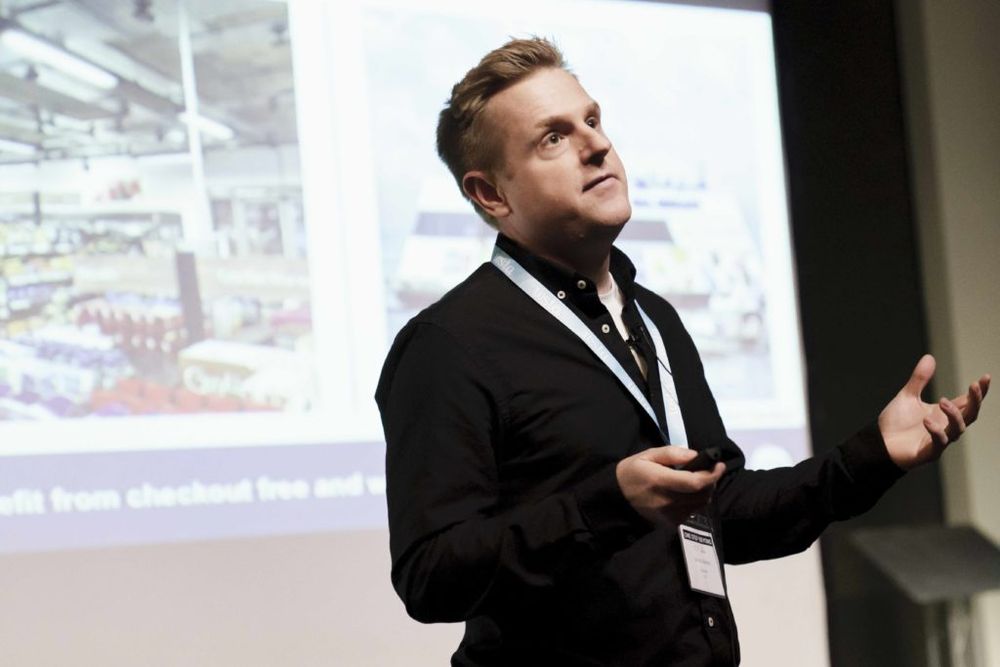
The IGD’s Simon Mayhew set out the core values and principles all retailers need to follow
Simon Mayhew agreed we are all now dealing with a very different consumer to the one we were trying to attract and target five or 10 years ago. But it’s only their expectations that have changed not their basic desires to shop and spend money with retailers who are offering them the brands they want to buy at the prices they can afford. They still want great choice, but it now needs to be targeted far more at them. They want it to be easy to go and shop, but that expectation of convenience is now so far advanced to what it was thanks to the same day delivery standards set by the online giants.
“Amazon has met and changed shopper needs,” he stressed.
Now consumers expect and want to use technology to make their shopping experience more personal, quicker, and reliable.
The key to understanding how well you are doing as a retailer, or a brand supplying them, is your ranking and performance when it comes to: relevance (to your shoppers’ needs); efficiency (in terms of managing costs and time); and point of difference (standing out from the competition).
He urged the delegates to get out of their comfort zones and visit and seek out retailers not in their normal working life to see what they are doing. There are great examples of what you can do if you look.
Like Albert Heijn that can now analyse your shopping basket for you and tell you which products are good or bad for your health and suggest alternative products to replace them.
Walmart in the US allows you to do a DNA test and then see if the products you choose to buy are suitable for your DNA. You can’t get much more personalised than that.
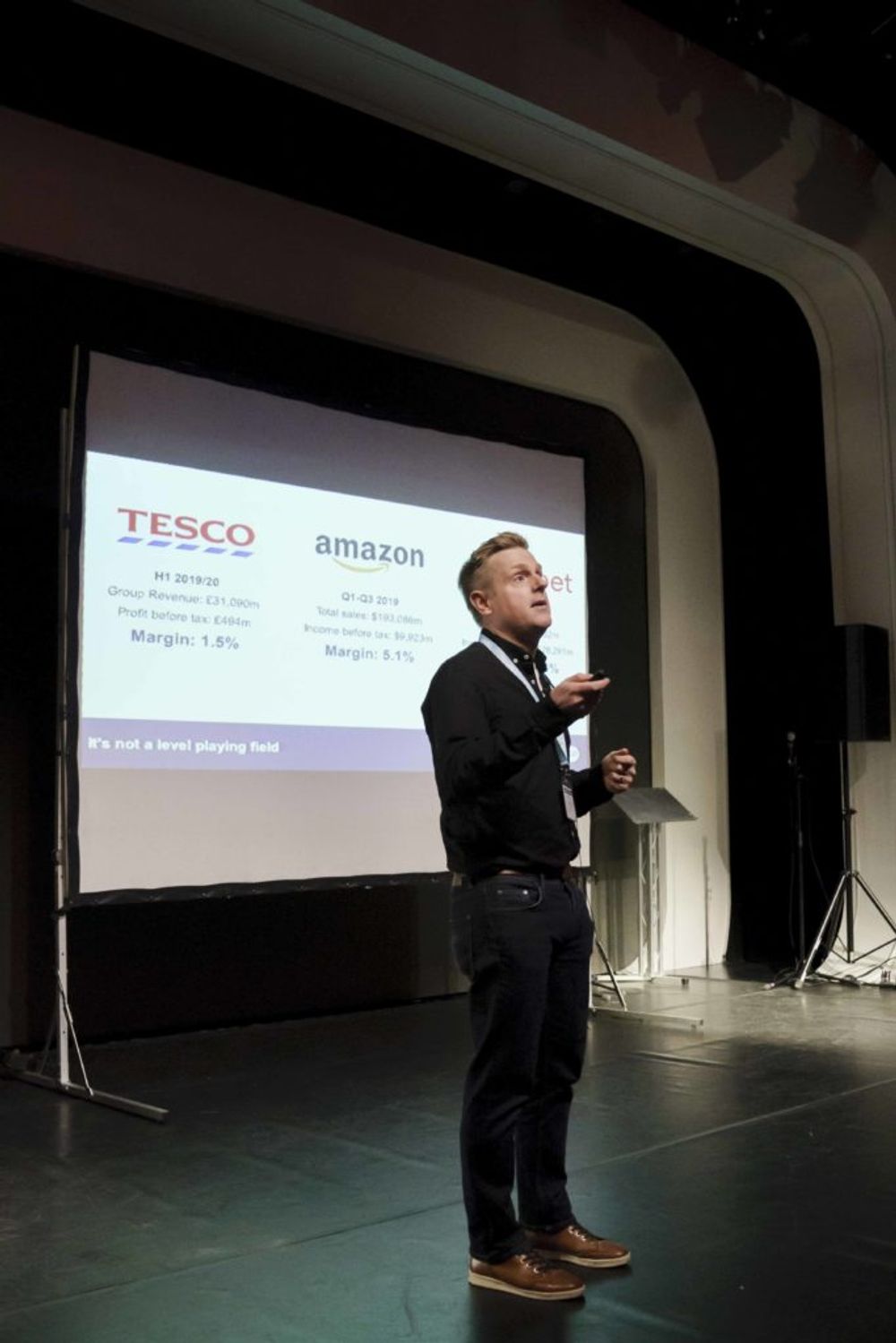
Mayhew said the challenge for the major retailers was being able to compete with online giants on margin
The winners and losers in retail in the future will be those who can analyse their shopping data and then act on it to give their customers ever more personal and relevant shopping experiences when they choose to shop with them.
We are living in an age of “frictionless shopping” where we need to make it as easy as possible.
Carrefour even now has a floating ship in popular seaside resorts that allow customers to order online and then someone on a jet ski will go out and deliver it to your yacht.
The future of great retailing will increasingly be about shopper-tainment and finding ever more creative ways to attract people to your stores.
The four key capabilities in the coming years will be about:
- Leadership: having the right vision and strategy to go after.
- Culture: creating the right staff and in-store culture for your customers.
- Data: how you use and treasure it.
- Talent: how you encourage diverse thinking and a continuous learning mindset.

The closing panel of the day included Lucy Auld from Freixenet Copestick, Robert Joseph, Rollo Gabb and Paul Mabray
- If you would like to find out how you can get involved in the next One Step Beyond event then contact Richard Siddle on richardsiddle@btopenworld.com.
- There will be a full downloadable PDF report published in the coming weeks with extensive write ups of each session, including the industry panel debates.
- If you would like any more information about this year’s event then go to the One Step Beyond website here.































